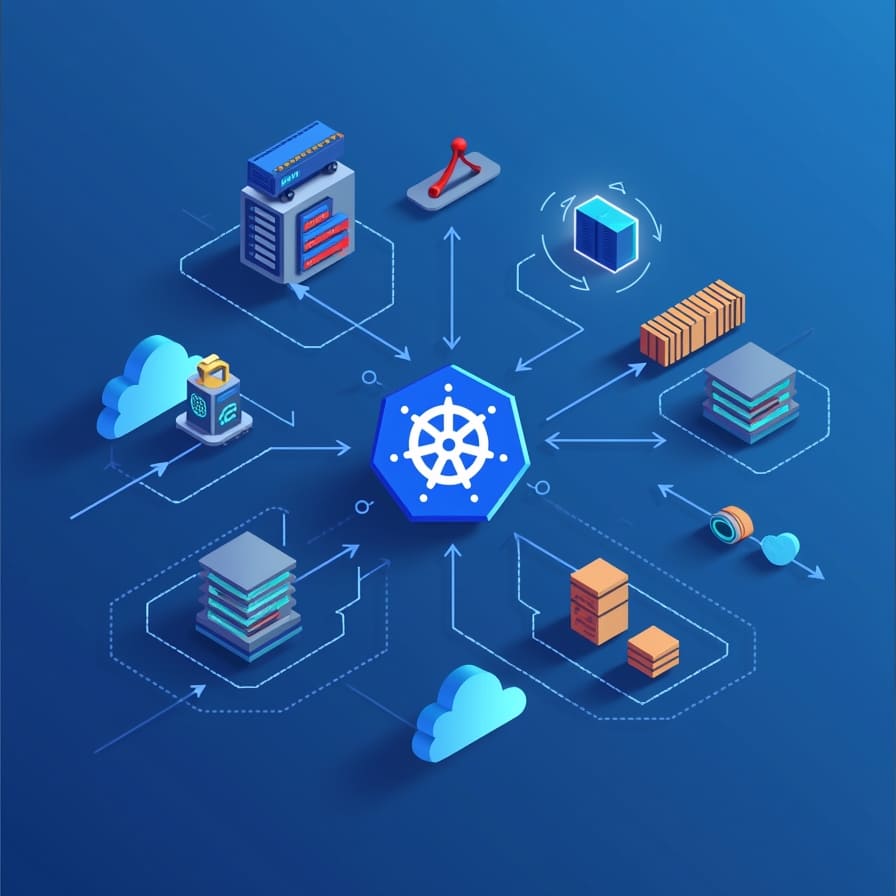What is the best way to handle logging in Kubernetes environments?

The best way to handle logging in Kubernetes environments involves implementing centralized logging with dedicated log aggregation tools, establishing proper log forwarding mechanisms, and maintaining persistent storage solutions. This approach addresses the unique challenges of container orchestration, including ephemeral container lifecycles and distributed architecture complexity. Effective Kubernetes logging requires combining the right tools, monitoring strategies, and cloud-based infrastructure to ensure comprehensive visibility across your entire cluster.
Understanding Kubernetes logging fundamentals
Kubernetes logging differs significantly from traditional server-based logging due to its containerised architecture. Unlike static servers where logs remain in predictable locations, container logs exist within ephemeral pods that can be created, destroyed, or moved across nodes at any time.
The Kubernetes logging architecture handles three primary log types. Application logs contain output from your containerised applications, system logs capture Kubernetes component activities like kubelet and kube-proxy operations, and audit logs record API server interactions for security and compliance purposes.
Container logs are typically written to stdout and stderr streams, which Kubernetes automatically captures and stores temporarily on nodes. However, when pods terminate, these logs disappear unless you implement proper log management strategies. This temporary nature makes traditional file-based logging approaches inadequate for Kubernetes environments.
What are the main challenges with Kubernetes logging?
The ephemeral nature of containers creates the most significant logging challenge in Kubernetes environments. When pods restart or move between nodes, their logs vanish unless you've implemented persistent log storage solutions.
Distributed architecture complexity multiplies logging difficulties across multiple nodes, pods, and services. You need to correlate logs from various components to understand application behaviour, which becomes increasingly difficult as your cluster scales.
Log volume management presents another major hurdle. Kubernetes clusters generate massive amounts of log data from applications, system components, and infrastructure layers. Without proper filtering and retention policies, storage costs escalate rapidly whilst performance degrades.
Network partitions and node failures can cause log loss if you rely solely on local storage. You need robust forwarding mechanisms that handle connectivity issues and ensure log delivery even during infrastructure problems.
How do you implement centralized logging in Kubernetes?
Centralized logging in Kubernetes requires deploying log forwarding agents across your cluster to collect, process, and ship logs to external storage systems. This approach ensures log persistence regardless of pod lifecycle events.
Fluentd and Fluent Bit serve as popular logging agents for Kubernetes deployments. You deploy these agents as DaemonSets to ensure every node runs a log collection instance. These agents automatically discover containers, parse log formats, and forward data to your chosen destinations.
Configuration involves setting up log routing rules, defining parsing patterns for different log formats, and establishing buffering mechanisms for reliable delivery. You can configure agents to enrich logs with Kubernetes metadata like pod names, namespaces, and labels for better searchability.
Integration with cloud logging services simplifies infrastructure management. Cloud providers offer managed logging solutions that handle scaling, storage, and maintenance automatically, allowing you to focus on log analysis rather than infrastructure management.
What are the best tools for Kubernetes log management?
The ELK Stack (Elasticsearch, Logstash, Kibana) remains a popular choice for Kubernetes monitoring and log management. Elasticsearch provides scalable log storage and search capabilities, Logstash processes and transforms log data, whilst Kibana offers visualisation and dashboard functionality.
Prometheus combined with Grafana excels at metrics collection and alerting, though it focuses more on numerical data than detailed log analysis. This combination works well for infrastructure monitoring alongside dedicated logging solutions.
Cloud-native logging solutions integrate seamlessly with managed Kubernetes services. These platforms handle infrastructure scaling automatically and provide built-in integration with container orchestration platforms.
| Tool Category | Primary Function | Best Use Case |
|---|---|---|
| ELK Stack | Log aggregation and analysis | Comprehensive log management |
| Prometheus + Grafana | Metrics and monitoring | Performance monitoring |
| Cloud logging services | Managed log storage | Simplified operations |
| Fluentd/Fluent Bit | Log forwarding | Data collection and routing |
How do you monitor and analyze Kubernetes logs effectively?
Effective log monitoring starts with implementing structured logging practices across your applications. Use consistent log formats, include relevant context like request IDs and user information, and establish clear severity levels for different event types.
Set up automated alerting based on log patterns and error rates. Configure alerts for application errors, resource constraints, and security events to enable rapid incident response. Use log aggregation to identify trends and patterns that might indicate underlying issues.
Establish log retention policies that balance storage costs with compliance requirements. Archive older logs to cheaper storage tiers whilst maintaining recent logs in high-performance systems for active analysis.
Implement log parsing and enrichment to extract meaningful information from raw log data. Add Kubernetes metadata, correlate related log entries, and create searchable indexes to improve troubleshooting efficiency.
Key takeaways for successful Kubernetes logging implementation
Successful Kubernetes logging requires planning your log aggregation strategy before deploying production workloads. Start with centralized logging architecture, choose appropriate tools for your scale and requirements, and establish clear log retention and monitoring policies.
Avoid common pitfalls like relying on local log storage, neglecting log volume management, or implementing logging as an afterthought. Design logging into your application architecture from the beginning to ensure comprehensive coverage.
Cloud service providers can significantly simplify logging infrastructure management by offering managed services that handle scaling, maintenance, and integration challenges. This approach allows you to focus on log analysis and application improvement rather than infrastructure management.
Regular testing of your logging pipeline ensures reliability during critical incidents. Verify log forwarding works correctly, test alerting mechanisms, and validate that log retention policies meet your operational requirements.
At Falconcloud, we understand that robust logging infrastructure forms the foundation of reliable Kubernetes operations. Our managed cloud services provide the scalable infrastructure needed to support comprehensive logging solutions, helping you maintain visibility across your containerised applications whilst focusing on delivering value to your users.


